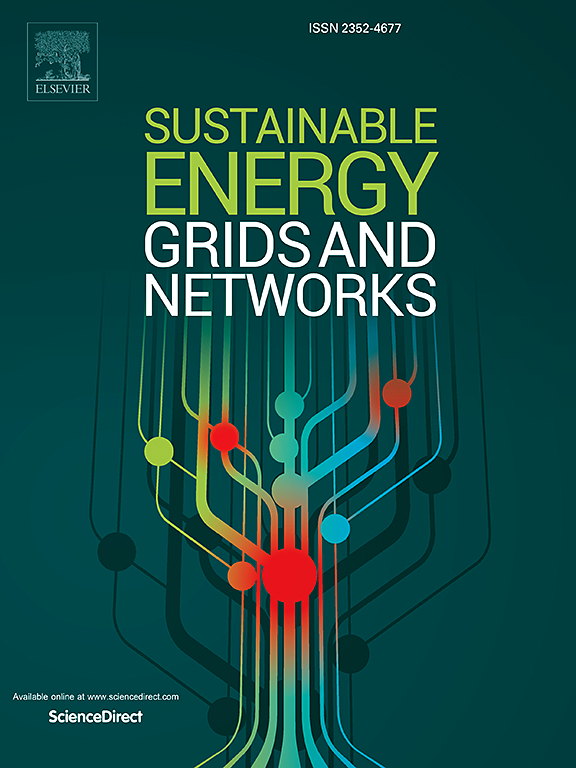Critical component analysis of cyber-physical power systems in cascading failures using graph convolutional networks: An energy-based approach
IF 4.8
2区 工程技术
Q2 ENERGY & FUELS
引用次数: 0
Abstract
Power systems, with increasing integration into communication networks, have evolved to become complex and interdependent cyber–physical power systems that are highly vulnerable to cascading failures. These failures, due to their propagation through the cyber and physical networks, often lead to severe disruptions. We employ improved percolation theory to model cascading failures triggered by malware cyber-attacks. Addressing the vulnerability of CPPS requires a comprehensive analysis that spans both the structural and functional dimensions of CPPS. This paper introduces a novel framework for vulnerability assessment in CPPS using Graph Convolutional Networks (GCN). Our approach captures the topological complexities and dynamic characteristics of CPPS, incorporating the entropy of potential energy of power system as a new feature to predict and analyze failure propagation. Through Layer-wise Relevance Propagation (LRP), we subsequently quantify the influence of potential energy on system vulnerabilities. Critical components are identified by using LRP scores and an entropy weighting method (EWM). Simulation results based on the cyber–physical IEEE 39-bus and IEEE RTS-96 power systems as test cases, demonstrate the model’s efficacy in identifying vulnerable nodes and branches and highlight the significant role of potential energy in cascading failures. This framework provides a comprehensive approach for real-time vulnerability assessments and resilience enhancement in CPPS.
使用图卷积网络分析级联故障中网络-物理电力系统的关键部件:一种基于能量的方法
随着电力系统越来越多地与通信网络集成,电力系统已经发展成为复杂和相互依赖的网络-物理电力系统,极易发生级联故障。由于这些故障通过网络和物理网络传播,通常会导致严重的中断。我们采用改进的渗透理论来模拟恶意软件网络攻击引发的级联故障。解决CPPS的脆弱性需要对CPPS的结构和功能维度进行全面的分析。本文介绍了一种基于图形卷积网络(GCN)的CPPS脆弱性评估框架。该方法抓住了CPPS的拓扑复杂性和动态特性,将电力系统势能熵作为预测和分析故障传播的新特征。通过分层关联传播(LRP),我们随后量化了势能对系统漏洞的影响。利用LRP分数和熵权法(EWM)识别关键成分。基于网络物理IEEE 39总线和IEEE RTS-96电力系统的仿真结果表明,该模型在识别脆弱节点和分支方面的有效性,并突出了势能在级联故障中的重要作用。该框架为CPPS的实时脆弱性评估和复原力增强提供了全面的方法。
本文章由计算机程序翻译,如有差异,请以英文原文为准。
求助全文
约1分钟内获得全文
求助全文
来源期刊

Sustainable Energy Grids & Networks
Energy-Energy Engineering and Power Technology
CiteScore
7.90
自引率
13.00%
发文量
206
审稿时长
49 days
期刊介绍:
Sustainable Energy, Grids and Networks (SEGAN)is an international peer-reviewed publication for theoretical and applied research dealing with energy, information grids and power networks, including smart grids from super to micro grid scales. SEGAN welcomes papers describing fundamental advances in mathematical, statistical or computational methods with application to power and energy systems, as well as papers on applications, computation and modeling in the areas of electrical and energy systems with coupled information and communication technologies.
 求助内容:
求助内容: 应助结果提醒方式:
应助结果提醒方式:


